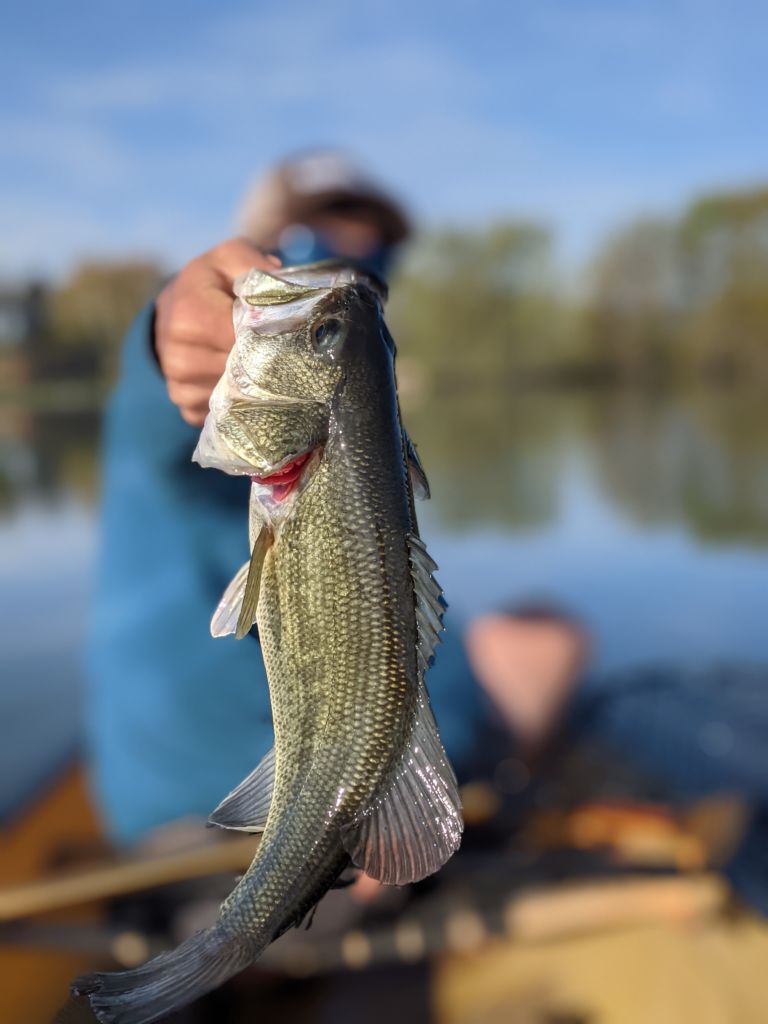Do you ever find a panfish bite under the ice where the fish are stubborn and just won’t eat anything? Or do you get sick of having to rebait a jig after every fish? What’s the solution, you might ask? It’s Ice Flies. Ice Flies have been used by anglers for decades to target finicky, timid, winter fish. They started as a cross-over of classic trout flies but have since been tweaked into niche fly patterns, specifically tied and modified for ice fishing. Extra movement, more flash, color, and extra weight are just some of the features that have been incorporated over the years to trigger bites through subtle hints of bugginess. Additionally, flies have the added benefit of not requiring extra bait, thus simplifying any trip’s gear list.
In my opinion, there are five main categories of patterns to mimic winter panfish food: Scuds, Mayflies, Caddis, Midges/bloodworms, and lastly, zooplankton.

#1. Scud (Amphipoda, Sideswimmer, Freshwater Shrimp)
The Scud is a commonplace invertebrae found in most freshwater bodies of water that is a key food source for winter panfish and trout. These crustaceans range in size from 2mm to 10mm. They feed primarily on decaying plant matter and can be found in and around rocks, mudflats, and weed beds. One key trait of a scud is the seemingly hundreds of little legs on the underside that breathe as the scud swims. To mimic this crustacean, there are a lot of options. Any standard trout fly scud pattern will work, however, adding extra triggers (flash, rubber legs, marabou) to a pattern will help with weary, winter fish. Also, adding weight (lead-free wire, beads, bead-chain eyes, etc.) to a scud pattern is a good way to help get it down to the strike zone faster. If the pattern is unweighted, you can always fish it behind a heavier fly (but check the local regulations for if it is legal in your state) or on a dropper rig with added sinkers. I usually use a #16 – #10 for scud-mimicking patterns, as it matches the natural size of these little bugs. For this profile, we commonly go with the ‘Gill shrimp because of the extra rubber legs, flash, and eyes, but any other common scud pattern will work (we like beaded ones because of the faster sink rate).
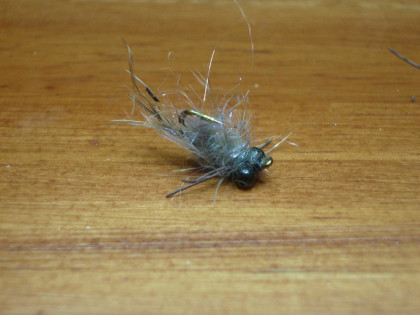
Pattern ideas: ‘Gill Shrimp, Simple Scud, Bead-Head Scud, Hare’s Ear, Hare and Copper, Pink Squirrel
#2. Mayfly Nymph and Damselflies (Spikes, Naiads, Shadflies, Fishflies)
Yes, mayflies and Damselflies are entirely different species, however, in my opinion, their profiles are pretty similar so often fly patterns can successfully mimic both. These common insects inhabit most bodies of water. They are often found on and around logs, brush piles, and rocks and are a common food source for winter fish. In our experience, smaller patterns mimicking Spikes work especially well to entice weary, deep winter fish, especially if you use flowy marabou and fine rubber legs in the pattern to mimic fish. Again there are quite a few trout patterns designed to mimic this bug, however, I have found that adding in extra movement and flash helps to entice more fish to bite. Sizewise, I try to stick in the #8-#14 range for this profile.

Pattern ideas: Slab Spike, Tungsten Slab Spike, Chilly Lime, Micro-tubbing mayfly nymph, Pheasant Tail, and Prince Nymph
#3 Caddis Larva (case makers, sedges, rock worms)
In the adult stage these bugs can be seen all through the warmer months around house lights (they are the small moth-like bugs that swarm any light source). However, there are two other stages to these bugs that both occur underwater: the larva stage and the pupa stage. Within the scope of icefishing though I’ll focus on the larval stage, when they are roaming around on the bottom feeding. There are two main categories of caddis larvae: free-roaming larvae and case makers. As the names suggest the difference is between whether or not the larvae build a case around them. The case builders are fascinating because they use sticks, leaves, grass, rocks, and other debris to craft a protective casing around themselves. I haven’t fished with many cased patterns, and rather have focused on the free-roaming larva. That’s not to say that cased patterns won’t catch fish, but rather, I just haven’t fished them much. Regardless of type, Caddis larvae are mostly bottom dwellers that forage around seeking decaying plant matter, dead fish, or other insects. Caddis are fleshy and grub-like in their larval stage, which is why fish love to eat them. As for size, I prefer the #10-#14 range.
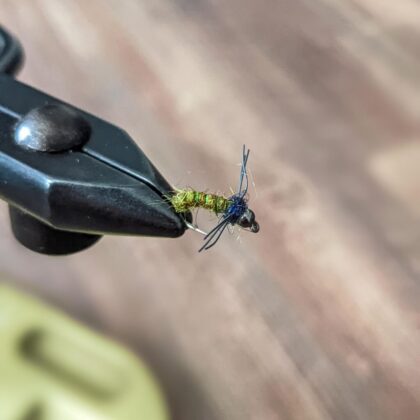
Pattern ideas: Icy Caddis, Green Caddis
#4 Midges & Bloodworms (chironomids, midges, mosquito larvae, or lake flies)
This is kinda a catch-all category and encompasses a large swath of food types. Midges are technically a specific species (family Chironomidae), but for this post, I’ll refer to them as a category of small insect larvae (as is commonplace in the fly fishing community). Midges are a plentiful food source in most bodies of fresh water; better yet, fish love to eat these little things in the winter. These tiny bugs eventually emerge as small, winged insects; however, under the ice, they are still in larval form. Midges are skinny, tube-like creatures that can swim freely in the water column, a key trait of these larvae is their segmented bodies that are semi-transparent. They can range from anything like a technical midge to a mosquito larvae to a bloodworm. These little critters are the little bugs you’d see twitching around after a few days if you leave a bucket of water out in the summer, and due to their plentiful nature, they are a common food source for panfish. However, unlike in the summer, they barely twitch and do not tend to move in the winter so a subtler presentation works better. As stated before, these are small species of bug and don’t get much larger than a couple of millimeters. For these flies, I try to stick in the range of #22-#16 hooks. Midges and bloodworms are another staple in the water system for decomposing decaying matter and are commonplace in every water system.
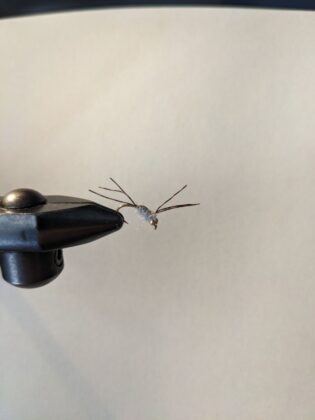
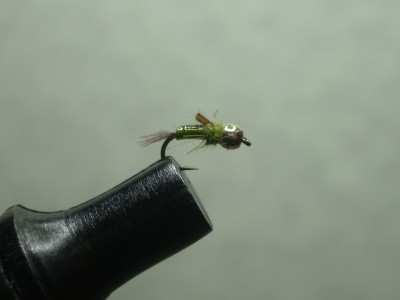
Pattern ideas: Tungsten Cluster Worm, Slab Spike, Greedy BWO, Brassie, Thread Midge, Sunken Trico, Trout Snatcher, San Juan Worm
#5 Zooplankton (tiny tinny stuff…)
Finally, there are microscopic organisms that play a crucial role in the winter diet of panfish. These tiny drifting animals, such as copepods and cladocerans, form the foundation of a panfish’s winter diet. Zooplankton are the tiny, fuzzy dots you may see twitching in front of a camera in the middle of winter. Despite the challenging conditions of icy waters, zooplankton remains active, providing a consistent and accessible food source for bluegills, crappie, and perch when other food options are scarce. Additionally, because of the tiny nature of these organisms, fish may nibble on them, even when they are too cold to be enticed by larger items. All that said, I rarely fish this type of fly because of how tiny they are (and thus are annoying to tie on… also known as pure laziness), but if I do, I won’t go larger than a size 20.
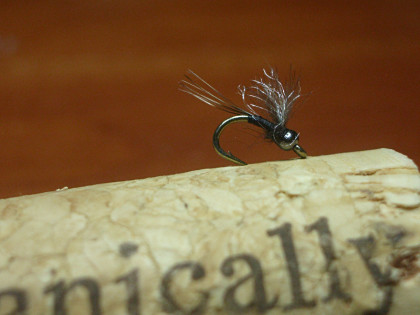
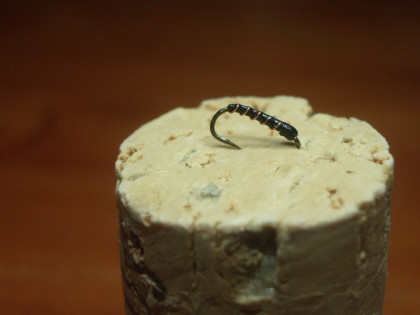
Pattern ideas: Thread Midge, Sunken Trico, Brassie,
Final Thoughts and Rigging
In general, these five categories of flies are designed to address a broad spectrum of bites and fish behaviors, particularly when used in conjunction with a standard assortment of jigs, spoons, and other hard baits. My preferred method for rigging ice flies involves deploying them as a dropper fly behind either a larger tungsten Ice Fly or a tungsten jig. This approach combines the weight of the heavy jig/fly to facilitate a rapid descent with the subtlety of the small fly to entice the bite. In situations where using two hooks is not legal (check your state’s fishing regs), I’ll opt to rig the fly on a drop shot with a small bell sinker to speed up the descent, or simply fish a single, larger tungsten fly. Also, it is very rare these days that I won’t incorporate a sonar or camera into my setup to gauge how the fish are reacting. These visual keys can help to narrow in on if I need to size down or be less aggressive with the jigging. I’ve observed that incorporating ice flies significantly enhances the productivity of my fishing trips, with the added advantage of not having to worry about running out of bait. This is particularly valuable given the increased fishing pressure in recent years, as the understated nature of flies can deceive even the most cautious of fish.
Tight Lines!!
Noah
P.S. Are you looking for some high-quality ice flies that are specifically tied and designed with timid winter fish in mind? Well, good news!! We have a large variety of patterns like these in our shop that were created from a love of ice fishing and that have been time-tested and improved to catch fish! Check them out in our shop today! Also, if you want help selecting an assortment or a custom pattern or color, you can send us a message here.


